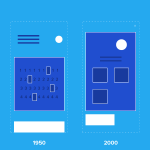
Beyond the Grid: Unraveling the Future of Layout with CSS Subgrid and Nested Grids
- Post
- August 5, 2023
- CSS Grid, HTML & CSS, Web Development
- 0 Comments
In this guide, we delve into the world of CSS Subgrid and Nested Grids, unlocking the potential to create intricate layouts that were previously challenging or impossible to achieve. We will explore the concepts, applications, and benefits of these advanced grid techniques, enabling you to revolutionize your web designs.
Understanding CSS Grid System
Before we venture into the realm of Subgrid and Nested Grids, let’s briefly recap the fundamental concepts of CSS Grid System. CSS Grid allows us to divide a web page into a grid of columns and rows, making it easier to position elements with precision and build responsive designs effortlessly.
The Emergence of CSS Subgrid
CSS Subgrid is a powerful extension of CSS Grid that addresses one of the major limitations – the inability to have nested grids inherit the size of their parent grids. With CSS Subgrid, we gain the ability to align nested grids with their corresponding parent grid tracks seamlessly.
The Power of Nested Grids
Nested Grids take the capabilities of Subgrid a step further by enabling the creation of complex layouts within individual grid cells. This feature brings an unprecedented level of control and flexibility to web designers, empowering them to craft truly unique and responsive user experiences.
Implementing CSS Subgrid and Nested Grids
To unlock the full potential of CSS Subgrid and Nested Grids, it’s crucial to understand their implementation. Let’s explore step-by-step tutorials and practical examples to master the techniques effectively.
Creating Responsive Layouts
In the era of mobile-first design, responsiveness is paramount. CSS Subgrid and Nested Grids offer a new dimension of responsiveness, making it easier to adapt layouts seamlessly across various screen sizes and devices.
Compatibility and Browser Support
As with any emerging technology, it’s essential to consider compatibility and browser support. We’ll delve into the current state of support for CSS Subgrid and Nested Grids and provide fallback solutions for browsers that do not support these features.
Advantages of CSS Subgrid and Nested Grids
CSS Subgrid and Nested Grids offer a plethora of advantages, from improved code structure to reduced redundancy. Let’s examine these benefits in detail and understand how they can optimize our web development workflow.
Common Pitfalls and How to Avoid Them
As with any advanced technique, there are potential pitfalls to be aware of. We’ll identify common challenges and provide practical tips to overcome them, ensuring smooth and effective implementation of CSS Subgrid and Nested Grids.
Use Cases and Real-World Examples
To fully grasp the power of CSS Subgrid and Nested Grids, we’ll showcase real-world examples where these techniques have been employed successfully to create stunning and responsive layouts.
Best Practices for Seamless Integration
To truly harness the potential of CSS Subgrid and Nested Grids, following best practices is crucial. We’ll outline essential guidelines to ensure seamless integration and optimize the performance of your web designs.
Final Words
CSS Subgrid and Nested Grids represent the future of layout in web design. By understanding and embracing these techniques, web developers can take their designs to new heights of creativity, responsiveness, and user experience.
Commonly Asked Questions
Q1: What is the main advantage of CSS Subgrid?
A1: CSS Subgrid allows nested grids to inherit the size of their parent grids, offering unmatched flexibility and alignment possibilities.
Q2: How do Nested Grids enhance web design?
A2: Nested Grids enable designers to create intricate layouts within grid cells, providing granular control over content positioning and responsiveness.
Q3: Are CSS Subgrid and Nested Grids supported in all browsers?
A3: While support is growing, not all browsers fully support these features. We’ll provide fallback solutions to ensure compatibility.
Q4: Can I use CSS Subgrid and Nested Grids for responsive design?
A4: Absolutely! CSS Subgrid and Nested Grids offer new dimensions of responsiveness, making them ideal for creating adaptive layouts.
Q5: Where can I find real-world examples of CSS Subgrid and Nested Grids in action?
A5: We’ll showcase inspiring examples of websites that have utilized these techniques to create captivating and user-friendly designs.




